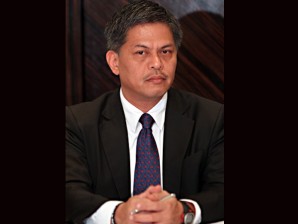MANILA, Philipines—He meant the face veil (niqab), not the head veil (hijab).
Education Secretary Armin Luistro clarified Wednesday that a recent department order did not require that Muslim public schoolteachers remove their veils while in class.
Contrary to what some newspaper headlines tended to suggest, Department Order 32 series 2013 was not asking government teachers who teach Arabic Language and Islamic Values Education (ALIVE) subjects to remove their head covering (hijab), Luistro said.
“What the order actually states is that teachers handling Arabic Language and Islamic Values Education (ALIVE) are requested to remove the veil covering the face (niqab) when teaching in the classroom,” he said in a statement.
He said removing the face veil while teaching would “promote better teacher-pupil relationship and support effective language teaching since seeing the teacher’s lips helps in the correct production of letter sounds.”
On Tuesday the Inquirer reported that Luistro has asked women Muslim teachers of Arabic and Islamic subjects to set aside their face veils when in class, pointing out that wearing a veil that covers the entire face would get in the way of effective language teaching as well as identification.
“Wearing such veil covering the entire face is allowed outside the classroom. Once the ustadja (teacher) is in the classroom, she is requested to remove the veil,” said the text of Luistro’s order dated July 16.
The education secretary pointed out that seeing the teacher’s face without the veil is also necessary “for proper identification of the teachers by the pupils, thus promoting better teacher-pupil relationship.”
The DepEd has been hiring Muslim schoolteachers (asatidz) to teach ALIVE subjects in public elementary schools in Muslim-dominated areas as part of efforts to integrate madrasah (Muslim school) education graduates into the mainstream.
Department Order 32 s. 2013 actually reiterated a policy guidance issued in 2001 that protects the religious rights of students in school, specifically the right of Muslim school girls to wear a headdress or hijab while in campus.—Dona Z. Pazzibugan
Originally posted at 04:24 pm | Wednesday, July 24, 2013
